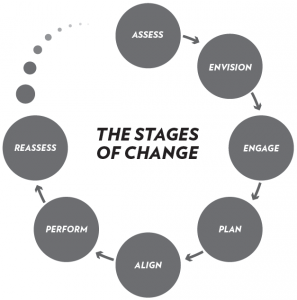Gone are the days when sales took all the glory after closing a deal. Columnist Sonjoy Ganguly believes marketing and sales need to work hand-in-hand to effectively drive ROI.

“Marketing doesn’t drive revenue — sales does.” Sound familiar? I can’t tell you the countless clients I have worked with who have made statements like that, illuminating their company’s narrow perspective on marketing as a cost center, not a revenue center.
As I should hope we all know, no department can operate independently and effectively drive revenue, at least not in any sustainable way.
Revenue growth is a matrix of cross-functional responsibility across engineering, finance, operations, sales, marketing, customer success and others. All parties across the enterprise have a hand in driving and building revenue. As the rest of these key functions and stakeholders play their part in the equation, sales and marketing specifically must work closely together — jointly, really — to drive revenue.
Legacy metrics don’t tell the whole story
The problem is that it’s easy to benchmark and measure sales performance with traditional higher-level and revenue-based KPIs. The difficulty and tension comes with the fact that marketing has traditionally been measured on different KPIs. They are measured on legacy micro-level KPIs like lead conversion.
Today, the lens on marketing has to gauge macro-level activity and outcomes across a more intricate B2B customer journey than ever before, as well as address a mix of tangibles and intangibles.
Marketing isn’t responsible for booking the revenue, so they are more indirectly impacting revenue. Yet, the modern CMO has more revenue pressure than ever before, so there is a dichotomy at play where the organization’s perspective on marketing’s impact is still being measured based on legacy metrics like lead conversions.
Buyers and sellers live in a much more complicated world than in the past — with tighter regulations on “gifts,” more diverse buying committees and faster access to more information, yielding educated consumers with the most complex buyer journey that we have ever faced.
Gone are the days when sales could just do “whatever it takes” to close a deal and take the glory. Marketing and sales are starting to jointly share revenue accountability, which means they have to be much more tightly aligned.
Aligning marketing and sales
Achieving a strategic, operational relationship between sales and marketing that jointly pursues and delivers outcomes starts with changing the corporate culture around the role and impact marketing is seen as providing. For starters, the organization needs to adopt an attribution model that aligns marketing and sales.
It’s critical to migrate the organization’s perspective from marketing as a cost center to marketing as a revenue center, understanding that there are intangibles and indirect influences at play, so the KPIs must allow for this.
Since revenue is generally a delayed metric in the B2B world, marketers need a real-time attribution metric that can help validate their impact. After speaking with hundreds of B2B marketers, I learned the objectives are consistent: Marketers need to be able to validate their ability to reach and drive engagement with the right audiences and ultimately increase opportunity, pipeline and revenue with them.
Audience reach and site engagement offer great real-time attribution models for performance. We can then look at audience reach to pipeline and revenue for longer-term benchmarks.
Marketing and sales have to communicate and align more directly on objectives, targets and priorities, and they need to co-develop strategies for nurturing and engagement. Frequency of collaboration will ensure you have created an aligned messaging strategy across your nurturing and sales tactics.
Marketing and sales need to develop both objective and subjective models for identifying what’s working and what to do next. By working together, they can identify who the most engaged audiences are that they should jointly be prioritizing to effectively drive ROI.
And what discussion on B2B marketing would be complete without discussing Account-Based Marketing (ABM)? By layering an account-based approach on top of these strategies, you can start to develop a common account-based framework to benchmark not only marketing ROI, but more importantly, the impact of marketing and sales on the overall business.
Opinions expressed in this article are those of the guest author and not necessarily Marketing Land. Staff authors are listed here.
Marketing Land – Internet Marketing News, Strategies & Tips
(35)
Report Post








